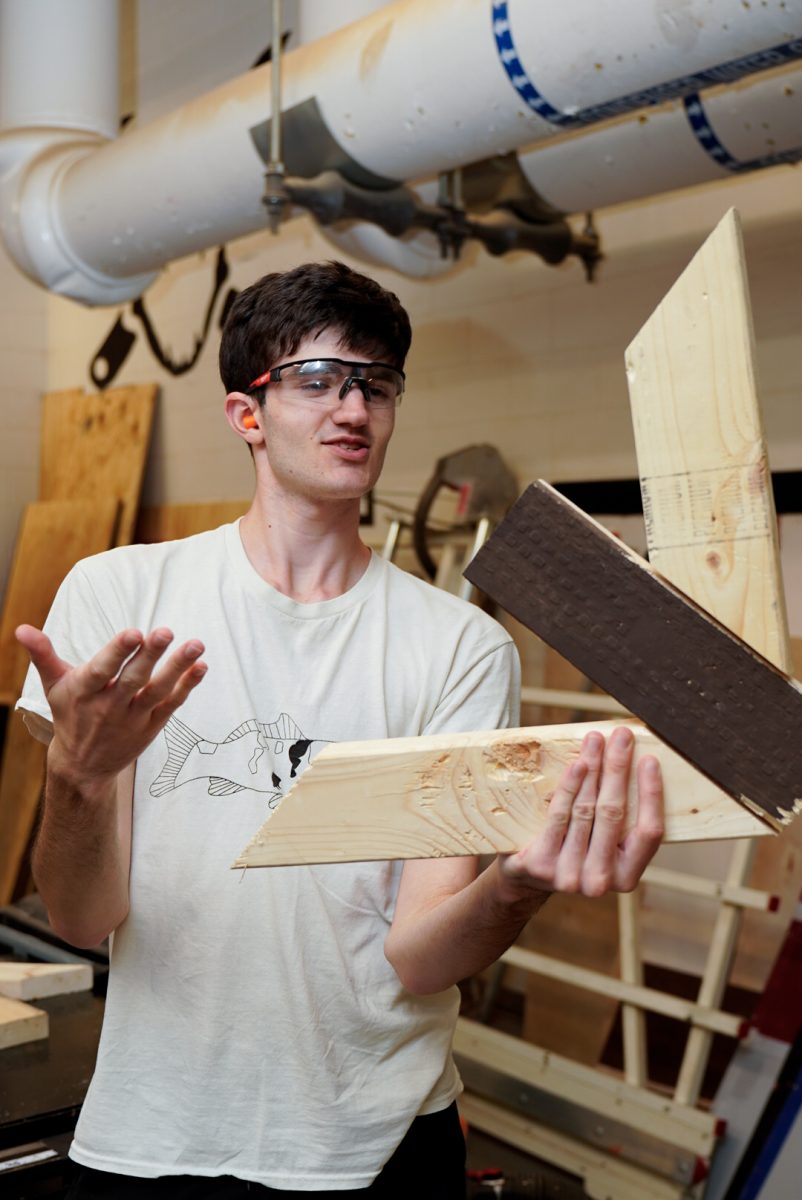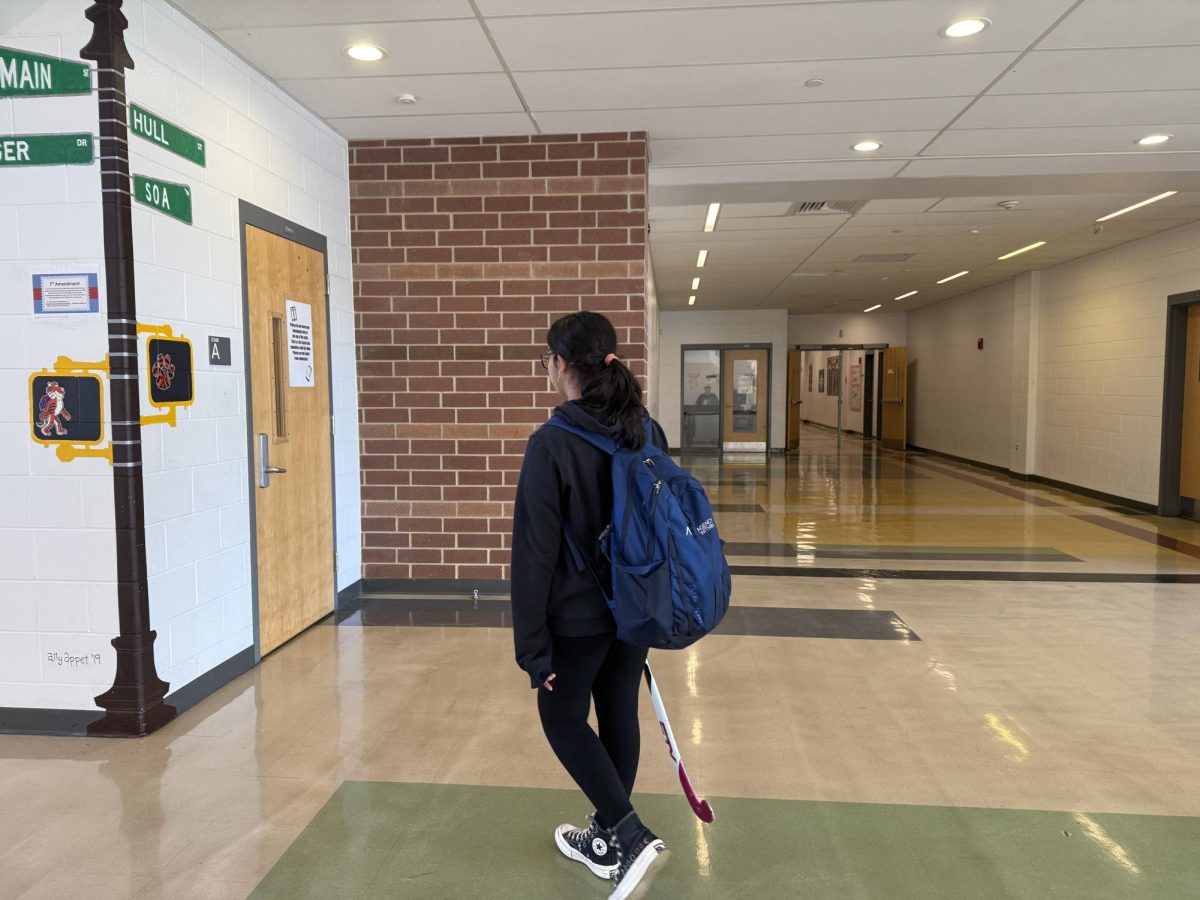
by Hilary Brumberg
Design and visual communication students usually create interactive websites, fancy fliers and intricate design work. This year, design students are adding a third dimension to their already professional and creative projects: service.
“This is another whole level of design. We are breaking new ground,” said senior Felege Gebru.
They are designing a Pedestrian Alert System for Addis Ababa, Ethiopia, which will help pedestrians safely cross dangerous roads, provide a protected area for pedestrians and warn drivers of crossing pedestrians, according to the project proposal.
Unlike in the United States where pedestrians have right-of-way, in Ethiopia, drivers have the right-of-way, according to senior Winnie Chen, a project leader with Gebru and juniors Karen Fan and Brian Tong. Consequently, Ethiopian police records show that 76 percent of all fatal automotive accidents are due to driver error.
With the design students’ Pedestrian Alert System, pedestrians will swipe their hands under a motion sensor, Chen said. Then, a strip of red LED lights on the ground will illuminate to alert drivers that a pedestrian is waiting to cross. The system will incorporate a dual-sensor method that uses a processing platform to calculate the arrival time of an oncoming vehicle.
To minimize environmental impact, the design team will build part of the system with used automotive parts and use solar energy to power it, according to design and visual communication teacher Sue Brooks.
Another part of the project is the creation of an educational component that the design students will launch before the installation of their invention, according to Brooks.
“This campaign will be geared toward raising awareness of basic road safety and explaining the concept and use of their invention through branding, educational packets, a website and online videos,” she said. “They will aim this campaign towards two groups: the drivers and the younger generation of Addis Ababa, who are more likely to adopt new ideas and cultural change.”
Gebru, a native Ethiopian, said the group chose to base the project In Ethiopia because “we have one of the highest traffic fatality rates.” His uncle has connections with St. Joseph’s Prep School of Addis Ababa, which aides the design students by providing information and resources about Ethiopian culture and pedestrian crossing rates.

In working on the Pedestrian Alert System, Gebru explained that the design students are learning about the culture of Ethiopia. “We are each doing research and creating a board about Ethiopian art to remind ourselves what inspired us about Ethiopia,” Gebru said. “We are getting a good grasp of what the country stands for.”
The design students will spend the next few weeks sketching the outside of Pedestrian Alert System, which will be based on Ethiopian art and architecture. Gebru said that by making the system look like it was created by local artists, it will be “non-intrusive and more accepting of their culture.”
The design team will “rely on the expertise of other programs in the career and technical education department,” according to Brooks. It will eventually work with drafting students to generate three-dimensional drawings for the final prototype, she said.
To develop the project, the design and visual communications team is one of 16 from high schools nationwide to win a $10,000 grant through the Lemelson-MIT program this fall.
In late September, Lemelson-MIT staff informed Brooks that this school’s team won the award. The Lemelson-MIT program “supports projects in the United States and developing countries that nurture innovators and unleash invention to advance economic, social and environmentally sustainable development,” according to the grant press release.
In March, Brooks received an email from Lemelson-MIT about the grant and presented it as a project to her honors design and visual communication students.
They were admitted to the second phase of the competition on April 19 based on their first proposal, which included three different project ideas. During the summer, the students decided to focus on the Pedestrian Alert System and submitted the second proposal, which Lemelson-MIT accepted this September.
“The students have already been working hard on this project,” Brooks said. “Some worked all summer, conceptualizing the technical and design aspects of the invention. They made meaningful and informed decisions, applying their advanced and specialized design, math and science skills throughout the proposal process.”
The Lemelson-MIT grant requires students to create a functioning prototype of the Pedestrian Alert System.
In June, design students will showcase the prototype and educational component at Lemelson-MIT’s EurekaFest, “a multi-day celebration designed to empower a legacy of inventors through activities that inspire youth, honor roles models and encourage creativity and problem solving,” according to the press release.
Chen said that the project “has been a great experience. I’ve learned a lot about the methods of the design industry.”









































